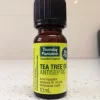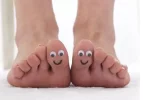Hand-in-hand with foot care is what shoes/boots.
I no longer wear boots. Here is a list of recommended Camino foot wear from below cited article:
"""Here is my list of recommended Camino Footwear:
La Sportiva Akasha *Top Pick*- Great grip, cushion, and precision. A little warm in the summer.
La Sportiva Ultra Raptor – Great grip, comfort, and breathability. A little narrow.
La Sportiva Mutant – Great for muddy trails in the Fall or Spring. A little warm for summer.
Nike Wildhorse 3 *Top Pick*- Great all around performer. Perfect for 3 season hiking.
Altra Lone Peak 3.0 – Great for wide feet and those prone to blisters.
Merrell All Out Peak – Another great all around performer in 3 seasons.
Hoka One One Speed Instinct – Great cushion with dual density midsole.
Salomon Wings Pro 2 *Top Pick*- Perfect stability and protection, with great grip and durability.
Salomon Sense Pro 2 – For those looking for a less structured Wings Pro 2.
Salomon XA Pro 3D *Top Pick*- A beast of a hiker. I wore these on the John Muir Trail and Tour du Mont Blanc.
Salomon X Ultra 2 *Top Pick*- Another beast of a hiker. Similar to the XA Pro 3D, but a much more aggressive outsole.
New Balance Leadville 3 – Only shoe on this list to come in widths. A great all around hiker.
Saucony Peregrine 6 – A more lightweight and nimble options, but with great traction and protection.
Brooks Cascadia 11 – An old faithful trail shoe. The Cascadia is legendary on the PCT, CDT, and AT."""
You can find article at:
https://trailtopeak.com/2014/04/02/10-most-important-gear-items-to-bring-on-camino-de-santiago/You
The Salomon X Ultra 2 and the Salomon XA Pro 3D are great.





























